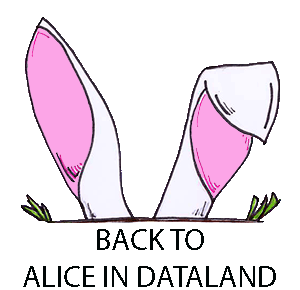
"You may not have lived much under the sea—"("I haven't," said Alice)—"and perhaps you were never even introduced to a lobster—"(Alice began to say "I once tasted—" but checked herself hastily, and said "No, never")"—so you can have no idea what a delightful thing a Lobster Quadrille is!"
While the first games kept Alice as a user of text, following paths somewhat familiar from her previous adventure navigated by verbs, Alice eventually became a playable avatar.
Now, Kitty, let's consider who it was that dreamed it all. This is a serious question, my dear, and you should not go on licking your paw like that—as if Dinah hadn't washed you this morning! You see, Kitty, it must have been either me or the Red King. He was part of my dream, of course—but then I was part of his.
Playing as Alice allows us to participate in her immersion in an unfamiliar world, as defined by Janet Murray: "Immersion is a metaphorical term derived from the physical experience of being submerged in water... in a participatory medium, immersion implies learning to swim, to do the things that the new environment makes possible" (98).
The Alice of games is often familiar from other mediums. The original Alice cartoon inspired a platformer on the Game Boy Color in 2000. Disney ported Burton's Alice onto the Wii, DS, and PC in an action-adventure game in 2010. Alice also appropriately makes appearances in games that cross worlds, such as the Kingdom Hearts series.
Alice's journey translates well to the mechanics of play: as with interative fiction and hypertext, the node-based storytelling allows for the freedom of exploring a world.
The mechanics and fiction of Alice adaptations work together to create our understanding of her identity. Our understanding of mechanics is likewise shaped by the avatar we play: Alice acts as a lens on the rules of the gameworld. We are invested in her actions.
The third-person view lets us be one step removed: we are aware (or perhaps, we are aware that Alice embodies us.)
American McGee's Alice (2000) and its sequel, Alice: Madness Returns (2011) offer a darker Alice fiction. The same characters appear, but twisted by a horror landscape imposed by Alice's own mind.
Our appreciation for what is distorted only works when we are already familiar with Alice: the original wonderland is a convenient metaphor on which the new game builds. Henry Jenkins notes that this relies on the assumption "that players start the game with a pretty well-developed mental map of the spaces... and that they will read his distorted and often monstrous images against the the background of mental images formed from previous encounters" (124).
Cathleena Martin notes that this adaptation capitalizes on what is game-like around Alice while taking it a step further, turning objects from Carroll's world into weapons: "Playing cards can be flung one at a time as projectile weapons... Alice can use a croquet mallet... [others have] a thematic basis in Carroll but no exact match" (139).
Playing Alice lets us experience a Wonderland, though perhaps not one much like what Carroll envisioned.